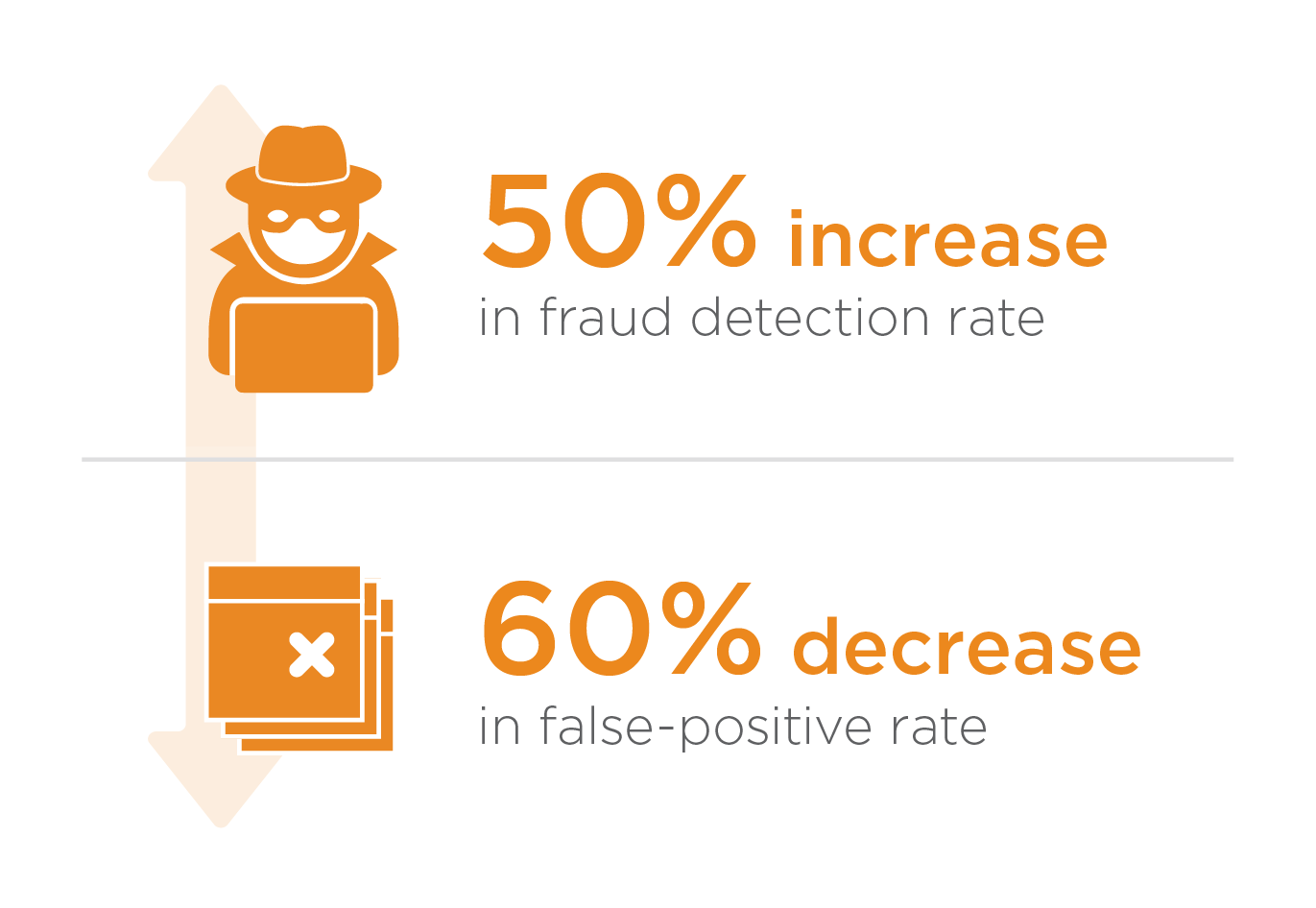Chapter 6. Danske Bank Case Study Details
In this chapter, we take a closer look at how Danske Bank is achieving high-impact business outcomes by fighting fraud with machine intelligence.
As discussed in Chapter 5, Danske Bank was struggling to mitigate fraud by using legacy detection systems. With a low 40% fraud detection rate and a 99.5% rate of false positives, it was clear the bank needed to modernize its defenses. To do this, it made a strategic decision to apply new analytic techniques, including AI, to better identify instances of fraud while reducing false positives in real time.
In partnership with Teradata Consulting, the bank was able to develop analytic solutions that take advantage of its unique data and provide a significant improvement over its previous rules-based engine, reducing false-positive detections of fraud by 60% with machine learning (with expectations to reach as high as 80% using deep learning), and increasing the true-positive detection rate by 50%, as illustrated in Figure 6-1.

Figure 6-1. Danske Bank business outcomes enabled by AI
The Project, the Tools, and the Team
The project evolved through several phases. First, the team laid the foundation for the analytics platform and got the data plumbing in place that would serve the machine and deep learning models. Then, the team trained, tested, and deployed machine learning models before moving ...
Get Achieving Real Business Outcomes from Artificial Intelligence now with the O’Reilly learning platform.
O’Reilly members experience books, live events, courses curated by job role, and more from O’Reilly and nearly 200 top publishers.

